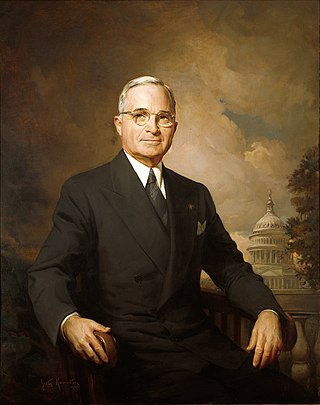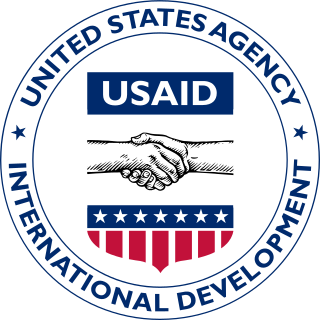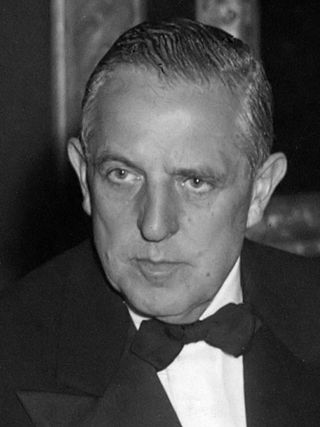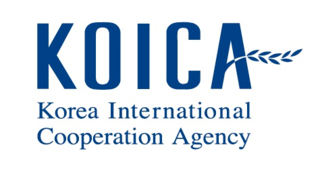
The Marshall Plan was an American initiative enacted in 1948 to provide foreign aid to Western Europe. The United States transferred $13.3 billion in economic recovery programs to Western European economies after the end of World War II. Replacing an earlier proposal for a Morgenthau Plan, it operated for four years beginning on April 3, 1948, though in 1951, the Marshall Plan was largely replaced by the Mutual Security Act. The goals of the United States were to rebuild war-torn regions, remove trade barriers, modernize industry, improve European prosperity and prevent the spread of communism. The Marshall Plan proposed the reduction of interstate barriers and the economic integration of the European Continent while also encouraging an increase in productivity as well as the adoption of modern business procedures.

Though the Ministry of Foreign Affairs (MOFA) is the government agency which is responsible for conducting the foreign relations of Nepal, historically, it is the Office of Prime Minister (PMO) which has exercised the authority to formulate the country's foreign policies. As a landlocked country wedged between two larger and far stronger powers, Nepal has tried to maintain good relations with both of its neighbors, People's Republic of China and Republic of India. However, the relationship between Nepal and India was significantly hampered by the 2015 Nepal blockade when the Government of Nepal accused India of mimicking "Russia-Ukraine" tactics by using ethnically Indian residents of Nepal to cause unrest along Nepal's southern border. India denied the allegation and said the unrest were an internal affair. For the most part though, Nepal has traditionally maintained a non-aligned policy and enjoys friendly relations with its neighboring countries and almost all the major countries of the world.

The Mutual Security Act of 1951 launched a major American foreign aid program, 1951–61, of grants to numerous countries. It largely replaced the Marshall Plan. The main goal was to help poor countries develop and to contain the spread of communism. It was signed on October 10, 1951, by President Harry S. Truman. Annual authorizations were about $7.5 billion, out of a GDP of $340bn in 1951, for military, economic, and technical foreign aid to American allies. The aid was aimed primarily at shoring up Western Europe, as the Cold War developed. In 1961 it was replaced by a new foreign aid program, the Foreign Assistance Act of 1961, which created the Agency for International Development (AID), and focused more on Latin America.

The Truman Doctrine is an American foreign policy that pledges American "support for democracies against authoritarian threats." The doctrine originated with the primary goal of countering the growth of the Soviet bloc during the Cold War. It was announced to Congress by President Harry S. Truman on March 12, 1947, and further developed on July 4, 1948, when he pledged to oppose the communist rebellions in Greece and Soviet demands from Turkey. More generally, the Truman Doctrine implied American support for other nations threatened by Moscow. It led to the formation of NATO in 1949. Historians often use Truman's speech to Congress on March 12, 1947 to date the start of the Cold War.

The United States Agency for International Development (USAID) is an independent agency of the United States government that is primarily responsible for administering civilian foreign aid and development assistance. With a budget of over $27 billion, USAID is one of the largest official aid agencies in the world and accounts for more than half of all U.S. foreign assistance—the highest in the world in absolute dollar terms.

Christian Archibald Herter was an American diplomat and Republican politician who was the 59th Governor of Massachusetts from 1953 to 1957 and United States Secretary of State from 1959 to 1961. He served as president of the board of trustees at the Dexter School from 1937 to 1939. His moderate tone of negotiations was confronted by the intensity of Soviet leader Nikita Khrushchev in a series of unpleasant episodes that turned the Cold War even colder in 1960–61.
United States Objectives and Programs for National Security, better known as NSC 68, was a 66-page top secret National Security Council (NSC) policy paper drafted by the Department of State and Department of Defense and presented to President Harry S. Truman on 7 April 1950. It was one of the most important American policy statements of the Cold War. In the words of scholar Ernest R. May, NSC 68 "provided the blueprint for the militarization of the Cold War from 1950 to the collapse of the Soviet Union at the beginning of the 1990s." NSC 68 and its subsequent amplifications advocated a large expansion in the military budget of the United States, the development of a hydrogen bomb, and increased military aid to allies of the United States. It made the rollback of global Communist expansion a high priority. NSC 68 rejected the alternative policies of friendly détente and containment of the Soviet Union.

The Mutual Defense Assistance Act was a United States Act of Congress signed by President Harry S. Truman on 6 October 1949. For U.S. foreign policy, it was the first U.S. military foreign aid legislation of the Cold War era, and initially to Europe. The Act followed Truman's signing of the Economic Cooperation Act, on April 3, 1948, which provided non-military, economic reconstruction and development aid to Europe.

Development aid is a type of foreign/international/overseas aid given by governments and other agencies to support the economic, environmental, social, and political development of developing countries. Closely related concepts include: developmental aid, development assistance, official development assistance, development policy, development cooperation and technical assistance. It is distinguished from humanitarian aid by aiming at a sustained improvement in the conditions in a developing country, rather than short-term relief. Development aid is thus widely seen as a major way to meet Sustainable Development Goal 1 for the developing nations.

In international relations, aid is – from the perspective of governments – a voluntary transfer of resources from one country to another.

Due to the strong historical, political, cultural and religious ties between them, Greece and the United States today enjoy excellent diplomatic relations and consider each other an ally. Today Greece is one of the United States's closest allies.
The Locke Mission refers to the 1951–1953 attempt by the administration of Harry S Truman to create a regional office for the Near East in Beirut, Lebanon. This office operated under the guidance of Edwin A. Locke Jr. to coordinate all aspects of United States economic policy toward the region, with a particular focus on U.S. aid. In 1951, this aid was primarily provided to Arab refugees through the United Nations Relief and Works Administration and to specific nations and social classes through the Mutual Security Program and the Technical Cooperation Administration. A variety of factors doomed the mission, the office was quickly closed down, and today the Locke Mission is primarily noteworthy as one of the first examples of a drift from bilateralism toward regionalism in the Near East.

Paul Gray Hoffman was an American automobile company executive, statesman, and global development aid administrator. He was the first administrator of the Economic Cooperation Administration, where he led the implementation of the Marshall Plan from 1948 to 1950.

United States foreign aid, also known as US foreign assistance consists of a variety of tangible and intangible forms of assistance the United States gives to other countries. Foreign aid is used to support American national security and commercial interests and can also be distributed for humanitarian reasons. Aid is financed from US taxpayers and other revenue sources that Congress appropriates annually through the United States budget process. It is dispersed through "over 20 U.S. government agencies that manage foreign assistance programs," although about half of all economic assistance is channeled through the United States Agency for International Development (USAID).

The Korea International Cooperation Agency was established in 1991 by the Ministry of Foreign Affairs of South Korea as a governmental organization for Official Development Assistance (ODA). KOICA's goal is to enhance the effectiveness of South Korea's grant aid programs for developing countries by implementing the government's grant aid and technical cooperation programs. KOICA is led by three-year-term president of the board who is appointed by the President upon the recommendation of Foreign Minister.
Indian Technical and Economic Cooperation Programme (ITEC) is a bilateral assistance programme run by the Government of India. It is a demand-driven, response-oriented programme that focuses on addressing the needs of developing countries through innovative technological cooperation between India and the partnering nation. Along with its corollary the Special Commonwealth Assistance for Africa Programme, ITEC covers 158 countries across Asia, Africa, Latin America, Central and Eastern Europe, and several Pacific and Caribbean nations. Since its inception, the programme has spent over US$ 2 billion and benefited thousands of students and professionals from around the globe and annual expenditure on the programme has averaged US$ 100 million per annum in recent years.

Walt Walkinshaw (1917-2010) was an American attorney who "epitomized the Northwest character, old school. He was an outdoorsman, a lawyer with a strong conscience, and a passionate advocate of progressive causes," according to David Brewster in Crosscut.

The main issues of the United States foreign policy during the 1945–1953 presidency of Harry S. Truman include:
The House Select Committee on Foreign Aid, or Herter Committee, was established to study the proposal that had been launched by General George Marshall in his speech at Harvard on June 5, 1947, for a Marshall Plan, in part as Cold War anticommunism, which led future US President Richard Nixon to focus on foreign policy throughout his public career. In 1947, it identified a "prevailing theme throughout–that democratic leadership was close to non-existent and Communist leadership at the forefront of political shaping."

United States–Yugoslavia relations were the historical foreign relations of the United States with both Kingdom of Yugoslavia and Socialist Federal Republic of Yugoslavia (1945–1992). During the existence of the SFRY, relations oscillated from mutual ignorance, antagonism to close cooperation, and significant direct American engagement. The United States was represented in Yugoslavia by its embassy in Belgrade and consulate general in Zagreb.















